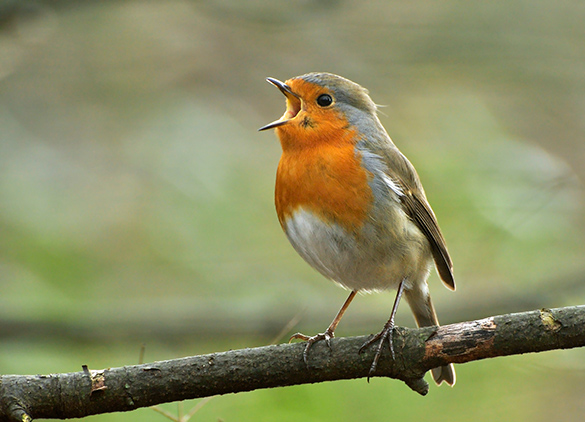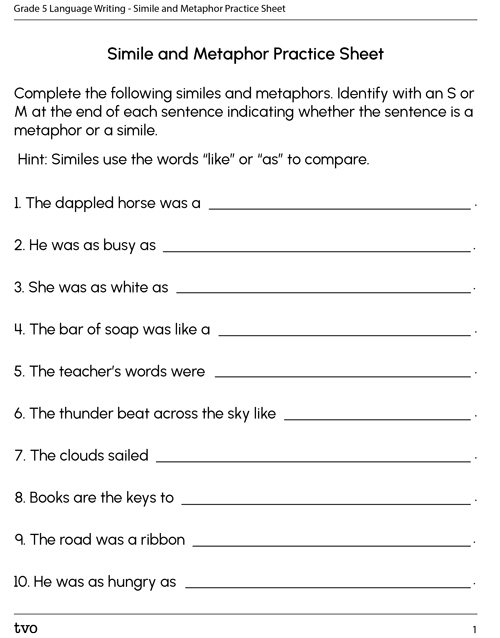Minds On
Ways to express yourself: comparing objects
Have you ever used a comparison to try to describe something to another person? What comparison did you use? Why do you think a comparison is an effective strategy to communicate? What would communication be like if we couldn’t use comparisons?

Action
What are literary devices?
Literary devices are specific language techniques which authors use to create text that is clear, interesting, and memorable.
Figurative language is a literary device used to compare one thing to another. Using figurative language, or figures of speech, is one way to add understanding, dimension, and vividness to our writing.
Similes
A simile is when one object is compared to another using the words “like” or “as.” By comparing one thing to another, the author can evoke a mood or memory, help the reader to make connections, establish a theme, and add interest and color to the writing.
There are examples of similes in the following poem below. Can you find them? Compare your answers with a friend.

Birds
- Chirping non-stop, like a machine in the trees,
- Building their nest like little worker bees.
- They sing their songs, like chatter-boxes.
- As regular as alarm clocks,
- Waking people up each day.
- They are silent at night,
- Like snakes advancing on prey.
Source: Birds, Natasha Niemi, URL: http://www.mywordwizard.com/simile-poems.html, Published 2015, Accessed 15/03/2021.
Metaphors
Metaphors are almost the same as similes only they are more of a direct comparison. Metaphors don’t use the words “like” or “as” but instead use words like “is” or “are.” An author can evoke an emotional response from the audience by using metaphors. This can help the audience better understand the author’s message.
There are examples of metaphors in the following poem below. Can you find them? Compare your answers with a friend.

Homework
- Homework is a sudden storm on a sunny day.
- Homework is a flyaway kite.
- Homework is running up a very steep hill.
- Homework is watching your favourite treat fall to the ground.
- Homework is your treasured toy going missing.
- Homework is getting soaking wet in the rain.
- Homework is slipping and falling into the mud.
Similes and metaphors are often used in descriptive writing to create vivid sight and sound images. Explore the following video by Teacher Charmain as she shows you examples of how similes are used to allow the writer to express themselves more effectively and make the written word more engaging for readers.
When you’ve finished the video, explore the following two sentences. Decide which sentence, using similes, is the most descriptive for the reader.
- The sun is like a pool of golden snakes glistening in the sky, slithering in circles.
- The sun is like a ball, yellow, and shining.
Metaphors create the same effect. Explore the following sentences and decide which creates the best description for the reader.
- The sunset is a beautiful canvas.
- The sunset is colorful cotton candy.
- The sunset is paint on an artist’s brush.
Practice
Now it’s your turn to use similes and metaphors to express your ideas more vividly!
Complete the Simile and Metaphor Practice Sheet in your notebook or use the following fillable and printable document to test your understanding of similes and metaphors.
Simile and Metaphor Practice Sheet
Complete the following similes and metaphors. Identify with an S or M at the end of each sentence indicating whether the sentence is a metaphor or a simile.
Hint: Similes use the words “like” or “as” to compare.
- The dappled horse was a (Blank).
- He was as busy as (Blank).
- She was as white as (Blank).
- The bar of soap was like a (Blank).
- The teacher’s words were (Blank).
- The thunder beat across the sky like (Blank).
- The clouds sailed (Blank).
- Books are the keys to (Blank).
- The road was a ribbon (Blank).
- He was as hungry as (Blank).

Press the Activity button to access Simile and Metaphor Practice Sheet.
Activity (Open PDF in a new tab)Consolidation
Your favourite place
Make a list of 5 similes and 5 metaphors that describe a place or environment that is meaningful to you. Try to pick similes and metaphors that help your reader imagine this place easily.
Using these similes and metaphors, create a descriptive paragraph that describes what this place means to you. You may write or type your paragraph or use an audio recorder.
When you are done with your paragraph, if possible, share it with a partner. Can they describe the environment back to you? You’ll know you have done a great job when they are able to imagine the environment based on what they have explored. Identify areas in your own paragraphs that need improvement. Make revisions to improve the clarity of your description so that the reader can easily imagine your favourite place.
Reflection
As you read through these descriptions, which sentence best describes how you are feeling about your understanding of this learning activity? Press the button that is beside this sentence.
I feel...
Now, record your ideas using a voice recorder, speech-to-text, or writing tool.





